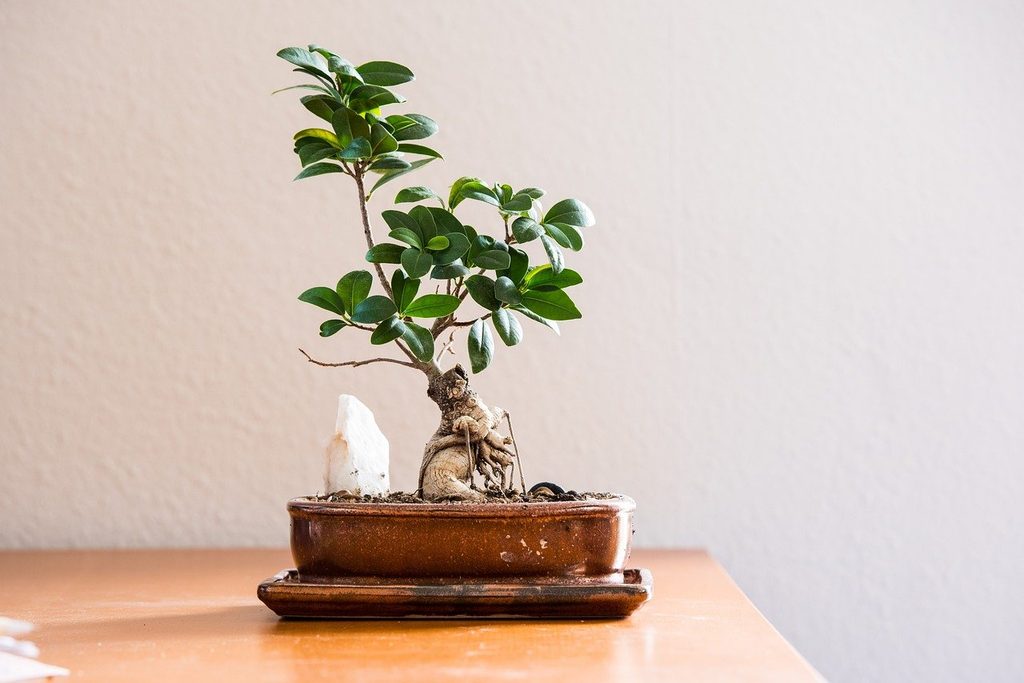
Bonsai trees are, by design, relaxing and beautiful to look at. Thanks to the internet and international shipping, bonsai trees are becoming more and more popular in America, and many gardeners are interested in bringing one of these stunning works of living art home. Bonsai trees need light, water, and fertilizer like any other plant, but their shape and size also need to be maintained. If you plan on growing your own bonsai tree, there are a few things you’ll need to know first. Here is your guide to the basics of bonsai.
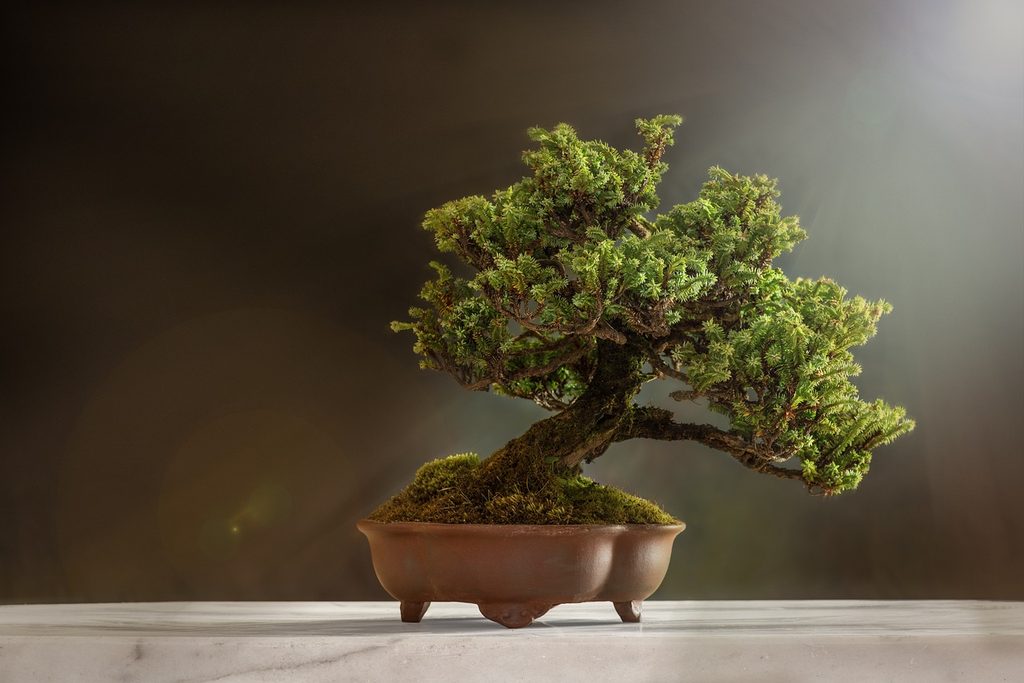
What is bonsai?
Bonsai is the traditional Japanese art of growing miniature trees. A bonsai tree is any small tree grown in a shallow pot or dish that is trained to grow in a way that resembles a fully grown tree. You can think of bonsai almost like a living sculpture, and like any other art form, there are certain conventions and traditions that bonsai artists follow.
Following these conventions, bonsai trees are meant to mimic the growth patterns of full-size trees. They aren’t symmetrical, and their designs are often inspired by the factors that shape trees in the wild. There are several categories, called bonsai styles, that bonsai trees can fall into. These styles define the shape and points of inspiration for the bonsai tree. For example, the slanting style draws inspiration from trees that have been skewed by strong wind, like you might find on a cliff. The Brooklyn Botanic Garden has a list of the five basic styles, as well as several modern variations and example photos to go along with them.
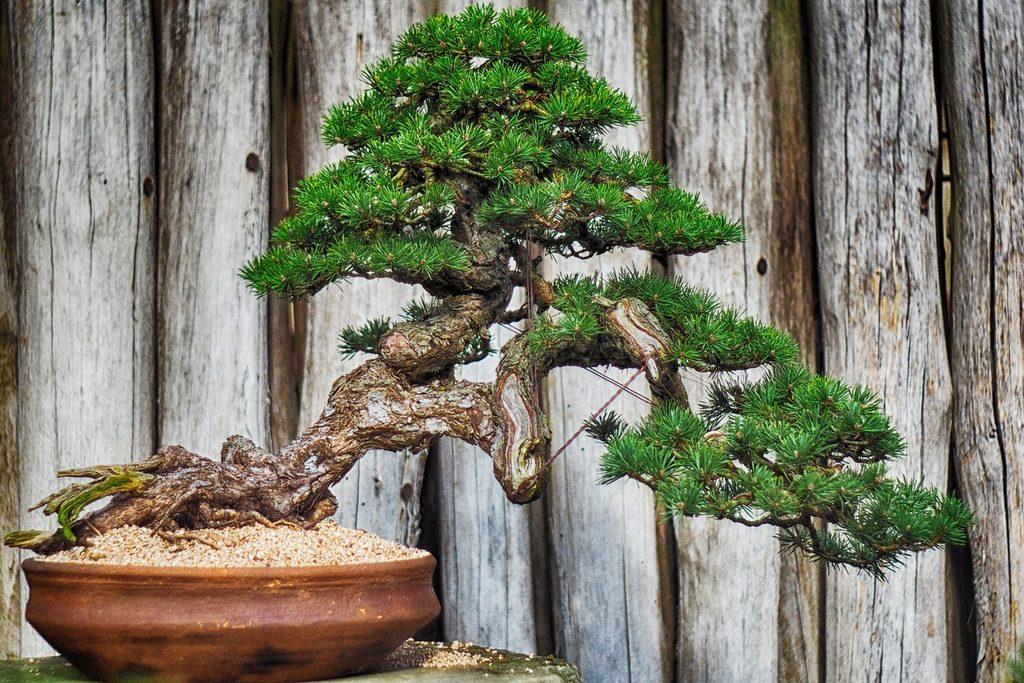
Sourcing and starting your bonsai tree
Since bonsai trees can be any tree variety capable of surviving in miniature form, you have plenty of options. Pines, spruces, and cypress trees are among the most popular. You can also opt for flowering shrubs and trees, such as azaleas and wisterias, and even fruit-bearing trees, such as apples!
After you’ve decided what type of bonsai you want to grow, you can choose how you want to begin your bonsai. The easiest way to start is with a kit or pre-grown bonsai. You can find these in some gardening stores or nurseries, as well as online. Starting this way is faster, as you won’t have to wait for the tree to mature, and kits come with further instructions and supplies to help you get started.
You can also start your bonsai from a cutting, seedling, or seed. Keep in mind that this takes much longer and is more difficult than starting with a mature bonsai. It will be a few years before your seedling will be ready to start shaping. While starting from a young plant can be rewarding, it is also a massive time commitment.
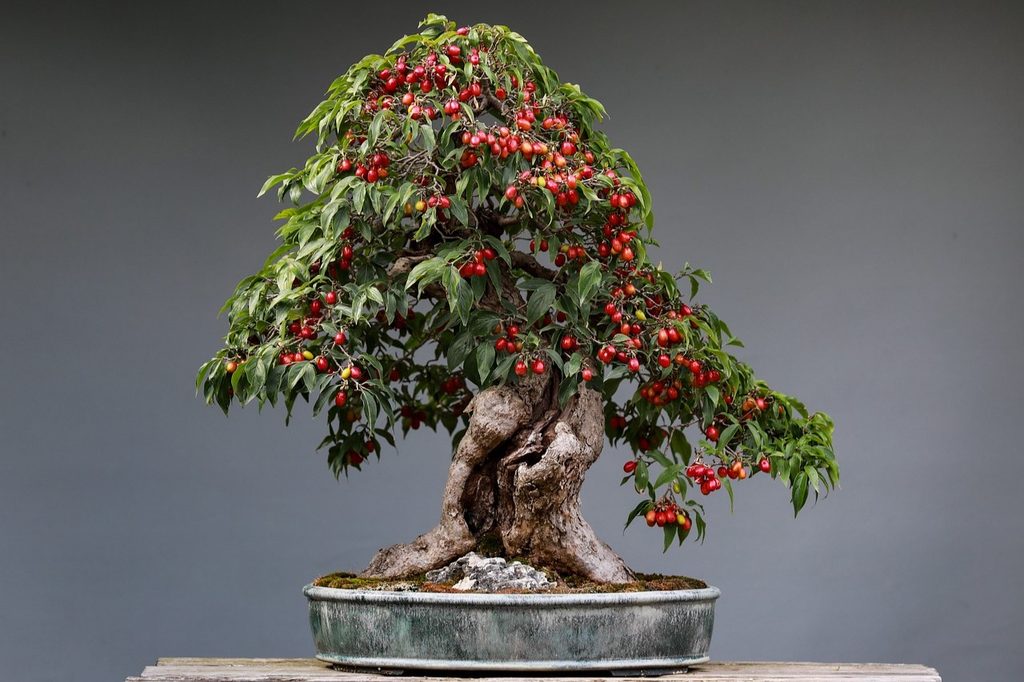
Styling your bonsai tree
Styling your bonsai is the process of carefully pruning and shaping the branches and trunk of the tree to achieve and maintain the desired design. Rather than a single step in growing your bonsai tree, think of styling as multiple tasks to add to your regular care routine.
Pruning a bonsai tree is similar to pruning any other tree or shrub. A few times per year, cut branches that are outgrowing your bonsai, as well as those growing in the wrong location for the design. You may need to invest in smaller pruning shears, but if you have trees with particularly small branches, you can remove them by hand.
Wiring means using wires to direct the shape and direction of branches. This is done by wrapping wire around the branch and trunk, then bending the branch into position. The wire supports the branch and holds it in place until the branch can keep its shape. Check the wires daily and remove them if they begin cutting into the branch. Bonsais can grow quickly, and you don’t want the branch to grow around the wire. Not only will this look unappealing, but the open lacerations leave your bonsai tree vulnerable to pests and diseases.
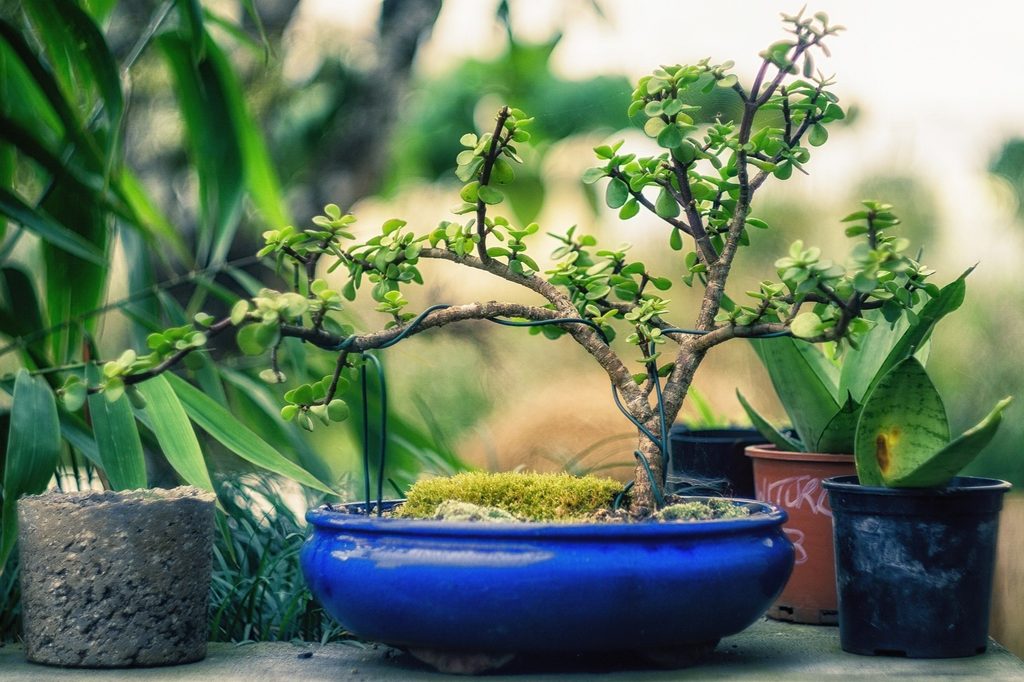
Bonsai tree care
In addition to styling your tree, you’ll need to ensure it has plenty of water, fertilizer, and sunlight. Make sure the pot your tree is in has plenty of drainage holes. Since bonsai grows in shallow pots, drainage is important to prevent overwatering. They also need more frequent waterings and fertilizer applications for this reason. Keep the soil moist but not soggy, and fertilize your bonsai tree regularly during spring and summer. You can find bonsai-specific fertilizer online or in gardening supply stores.
Your bonsai’s light needs depend on the type of tree you’re growing. Most commonly used species prefer bright indirect light and warm temperatures, but some can adapt to low lighting. The potential pests will vary depending on your tree as well. While indoor bonsai are less likely to see pest damage, keep an eye on your outdoor bonsai. Apply an organic pest repellent like neem oil as a precaution if you notice increased pest activity.
Creating and maintaining a beautiful bonsai tree can be tricky at first, but with practice and patience, anyone can learn this art form. Now that you have a grasp of the basic steps, you’re ready to start looking for your first bonsai tree. As your tree grows, so will you, and soon, you’ll be ready to branch out into more complicated techniques!


